Sony Xperia Z1 Compact Review
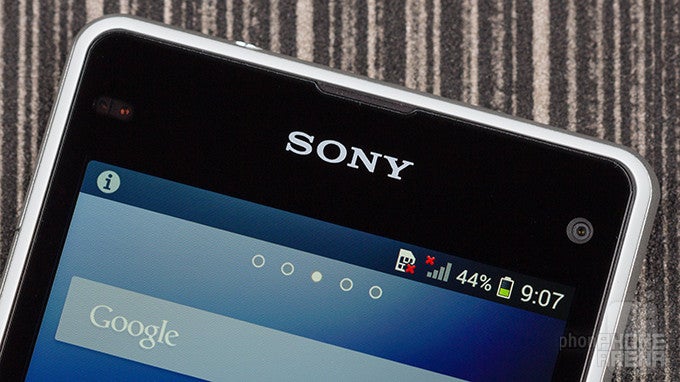
UPDATE: You can now read our Sony Xperia Z3 Review and Sony Xperia Z3 Compact Review!
Introduction
Well, we've asked for it, and a smartphone maker has finally delivered. A truly high-end Android phone in a compact body – that's what we've been looking for time and time again, but all there was out there were those 5” beasts and their smaller, weaker sidekicks. Now that Sony has stepped forth with exactly the type of proposition we've been yearning for, though, it appears there's a new question we have to ask ourselves – are we ready to leave the 5” displays that we've just started to get used to, in exchange for the comfort that a smaller phone would bring?
We don't necessarily have to view the Sony Xperia Z1 Compact as an alternative to the popular Android flagships that are currently available. There is another function that Sony's latest handset might be willing to perform, and that is to compete with the iPhone 5s – not the way other Android flagships do (which is by differentiation), but by facing it directly and fighting for the very same customers. While this certainly doesn't sound like an easy challenge (we can't think of other phones that have tried to do it – besides the early Androids, and those failed miserably), the Xperia Z1 Compact seems surprisingly fit for the task, as it's got both the looks and the heart of a winner.
So, two questions that we'll seek to answer: the Xperia Z1 Compact as an alternative to an Android flagship, and the Xperia Z1 Compact as an iPhone rival. Let's get going!
Design
Sony's beautiful OmniBalance design in an appropriate form
The Xperia Z1's glass-and-metal design is undoubtedly beautiful, but the stylish, rectangular shape and sizable bezels have ultimately resulted in a gadget that is much more difficult to handle and carry in a pocket than many of the other offerings in the same class. As far as looks go – yes, Sony's so-called OmniBalance design is very appealing, however, the Z1's massive footprint has made it a bit difficult to enjoy.
All of this means that the Sony Xperia Z1 Compact is just the right size to showcase Sony's premium design in its finest form. Now that having a bit of an extra bezel around the screen isn't such a big deal, we're simply delighted to hold and interact with the classy exterior of the Xperia Z1 Compact. The front side is made of durable glass, while the back uses a plastic material. The surrounding frame is made of sturdy metal. As a result, the Z1 Compact is a beautiful product with a high-quality construction that can easily best most of the competition.
The physical keys of the phone are mostly well-made, though the volume rocker could, indeed, be better. Still, the power/lock key and the two-step camera shutter react well to the touch, so you should have much trouble in this department.
In terms of dimensions, the Xperia Z1 Compact (5.00 x 2.56 x 0.37 inches (127 x 64.9 x 9.5 mm)) is significantly smaller than the other high-end Android handsets. For example, here are the dimensions of the Xperia Z1: (5.69 x 2.91 x 0.33 inches (144.4 x 73.9 x 8.5 mm)), and of the Galaxy S4: (5.38 x 2.75 x 0.31 inches (136.6 x 69.8 x 7.9 mm)). Yes, the Xperia Z1 Compact is slightly thicker than most flagships, but overall, it's considerably smaller. And, just in case some of us have forgotten the advantages to having a smartphone that isn't as big as a chopping board, we'll have to say that using such a compact handset is definitely easier, mostly due to the fact that you can easily operate it even with one hand only. Plus, it takes less space, and it doesn't make you feel uncomfortable when you want to sit down, while it's still in your pocket.
If we have to compare the Z1 Compact directly to the iPhone 5s, we find that Sony's marvel is just a bit bigger than Apple's fingerprint-identifying jewel. However, let's not forget the fact that the Z1 Compact sports a slightly larger screen, which brings us to...
Display
Sony has finally embraced IPS – the LCD technology that makes this the company's best mobile screen yet.
There's no denying – after so much time, going back to a 4.3” screen on an Android smartphone feels a bit weird, but this only lasts for a day or so. It's safe to say that re-adapting to a 4.3” panel is about as easy as it is to adapting to a 5” one. Sure, staring at the Z1 Compact's relatively small screen for longer periods of time may tire your eyes quicker than doing so with a larger display, but unless you are a very heavy user, the difference in the overall experience will be close to negligible.
If someone's willing to view the Z1 Compact's 720 x 1280 screen resolution as a compromise, we'd have to disagree, because at 4.3 inches, that works out to a fairly high pixel density of 342 ppi (versus 326 ppi for the iPhone 5s). The image isn't as perfectly clear as on a 1080p screen, but once again, the difference is more than negligible. Everything looks super-clean and easily readable on the Z1 Compact's display.
What we're especially glad to report, though, is that Sony has finally embraced IPS technology, which means that the company's high-end phones will no longer suffer from poor viewing angles and insufficient color vibrancy. It's a much-needed tech in a modern smartphone, and we're glad that Sony has finally integrated this must-have feature. Here's to hoping that the company will keep outfitting its future devices with IPS (in-plane switching) as well!
The Xperia Z1 Compact is equipped with one rather potent display. The 4.3” panel has a maximum brightness of 515 nits, which is more than what most Android flagship phones can offer you. However, the screen can't get very dim, meaning that it might be a bit uncomfortable to read in the dark. Color temperature is around the decent 7200K zone. This translates to an image that appears just slightly colder than what's considered the reference point: 6500K. To give you some perspective, the iPhone 5s' color temperature is about 7150K – and it has an awesome display, so the Z1 Compact certainly doesn't disappoint. Delta E (grayscale), though, is a bit high, at 5.11. It's still decent, but it shows that there's some brightness disbalance, which is also visible in the gamma of 2.68. The Z1 Compact tends to display some of the darker areas a bit darker than they should be, potentially resulting in some lost detail in the shadows (the dark areas of images). In terms of colors, the Xperia Z1 Compact's IPS screen manages to stay away from any significant deviations from the correct values (Delta E rgbcmy of 5.06). Color gamut range is a bit bigger than the reference, sRGB range (110% of sRGB), though the display's actual coverage of the sRGB standard's colors stands at 97%. For the most true-to-life color experience, it's recommended that these two numbers (110% and 97%) are as close as possible to 100%, and in this case, they aren't quite there. Finally, viewing angles are good enough with the Z1 Compact – and much better than those of the other Xperia handsets.
Interface
Sony has a unique take on Android, and we actually don't mind it.
As any other popular Android smartphone manufacturer, Sony has its own, custom user interface. We certainly aren't in love with it, but we do have to admit that Sony's Android experience is more than usable. Most notably, it has this unified look across all menus and apps, which provides a sense of consistency and coherence. What's more, there are numerous bonus features by Sony, which bring additional value to its UI.
Running on top of Android 4.3 (an update to Android 4.4 is to follow), the custom UI is not so in-your-face, but is quite comprehensive. In our opinion, this is one of the more polished custom UIs for Android. It's certainly not the most feature-rich, but it's quite lively and pleasant to use.
The custom homescreen is very easy to get used to. Sony has done a good job at creating an intuitive experience that makes things like icon and widget placement (and widget resizing, too) easy as pie. Sony has found a good use for the pinch-in gesture on the homescreen. In the Xperia Z1 Compact, it initiates the homescreen editing screen, where you can easily add/discard homescreen pages, add wigets/apps, change the wallpaper, or the theme.
The otherwise standard main menu sports a special options panel that can be accessed with a swipe from the left hand side of the screen. Those options let you change the sorting or filtering of your app catalog, as well as initiate the Uninstall mode. This one's a bit irritating, as you can accidentally reveal the panel while simply scrolling through the main menu. It's probably not such a big issue on the Z1, but the smaller screen of the Compact means there's less space for you to swipe, and more chance of accidentally bringing up the options panel.
All of the essential apps like Phone, Contacts, Messaging and so on have been customized. They are quite simplistic and straightforward, which isn't a bad thing. We'll get back to the core applications, after we go over the silicon!
Processor and Memory
720p display + Snapdragon 800 chipset = cutting-edge performance
Powered by the potent Snapdragon 800 SoC, the Sony Xperia Z1 Compact is a true beast, despite the fact that its size is not as imposing as that of the other high-end Androids. Performance will never be an issue with this handset, at least considering the current generation of software available for Android. What's more, overall system performance is also great, probably even better than that of the Z1, due to the lower screen resolution – there are no visible hiccups or slowdowns. The CPU found in the Z1 Compact's Snapdragon 800 SoC is a quad-core Krait 400 beast that can go up to 2.2 GHz, if needed. Meanwhile, the Adreno 330 GPU is a worthy companion with its superb processing power when it comes to graphics. You can easily run every game out there and you'll enjoy sky-high frame-rates at all times.
Sony has installed the healthy 2 gigs of RAM on the Xperia Z1 Compact, which guarantees smooth performance even when you have multiple heavy apps running in the background. The Sony Xperia Z1 Compact comes with 16 GB of internal storage, but thankfully, it also gives you the option to install a microSD card for additional storage space. You can't buy the Z1 Compact with a larger amount of internal space, but that won't be such a big deal for most consumers, as easy memory expansion will be just a walk to the store away.
Phonebook
The phonebook of the Sony Xperia Z1 Compact is mostly pleasant to use. It looks and works well, although we don't like how little space is left for your call log, as it shares a single screen with the dialer. Other than that, switching between dialer, all contacts and favorites is pretty seamless.
Meanwhile, it's great to see that Sony has kept the good old T9-style dialing, where you can start T9-typing the name of the contact you want to call using the numeric keypad, and the phone will automatically find that person for you. It's very comfortable to dial this way.
Organizer
The busy man's best friend, the calendar, is well represented in the Sony Xperia Z1 Compact. The phone's calendar app features all the basic necessities like month, week and day views, as well as some 'bonus' features such as the ability to expand the appointments for the selected day in month view. The pinch-to-zoom function from the stock calendar has, thankfully, been preserved.
The handset also comes with a simple calculator, as well as a versatile notes app, which isn't the most convenient notes app ever, but makes up for it by offering a good array of options. Using Sony's Small Apps is very convenient. Once you press the multitasking button, you gain access to a good number of shortcuts to handy mini-apps, including a calculator, timer, notes and voice notes. It's great that this list is customizable, so you can put those apps that you need most in the more accessible positions. In the end, we found it pretty easy to make quick notes or recordings using the Sony Xperia Z1 Compact and its Small Apps. In some cases, it can be even faster to use a Small App to accomplish a certain task, rather than the respective full-blown version.
Messaging
Sony's has found a very good balance between comfort and versatility with the Z1 Compact's QWERTY keyboard. Featuring only the most needed keys, plus some additional ones such as the dot and the comma, typing is quick and easy with this keyboard. Sure, the keys aren't as big as on a 5” display, but still, composing messages and emails with this phone isn't bad at all. The landscape layout is also great, as it takes advantage of the full screen width.
The messaging app of the Xperia Z1 Compact is very well designed, with a versatile and intuitive interface. You can easily do stuff like attach a photo, video, sound, note, location, etc. to your messages. The default email app will do the job, though it lacks some more advanced settings like tweaking the preview text length, for example.
Internet and Connectivity
Unlike many other popular Android manufacturers, Sony isn't bundling its own Android browser, meaning that Chrome is the only browser available on the Sony Xperia Z1 Compact out of the box. For most users, though, Chrome will be all they need, as it tends to perform lovely on this device. Plus, it's always weird to see a phone ship with multiple internet browsers. As always, loading is super-fast with mobile Chrome, while navigation around pages, including scrolling and zooming, is very fluid and trouble-free. The browser inflates text mostly correctly, so usually it's just the right paragraphs that need to be read comfortably that are the ones to get an increased font-size.
LTE is supported across numerous bands, so as long as your carrier of choice offers 4G, the Z1 Compact should have access to those blazing-fast data speeds. If no LTE is available from your carrier, the Sony Xperia Z1 Compact should default to HSPA+ (42.2 Mbit/s down and 5.76 Mbit/s up).
Further completing its full set of connectivity options, the Z1 Compact is also the proud owner of support for all the latest Wi-Fi protocols (802.11 a, b, g, n, n 5GHz, ac), Bluetooth 4.0, internet tethering, NFC, MHL and DLNA. If you're the type of user who loves to explore the possibilities with these new technologies, the Xperia Z1 Compact will certainly prove to be a fine playground.
Camera
The 20.7 MP G Lens camera with 1/2.3" sensor enables you to take wonderful images.
The beefy 20.7 MP G Lens camera of the Sony Xperia Z1 Compact has absolutely the same characteristics as that of the Z1, which is a great technological achievement by Sony – to fit the same sensor in a considerably smaller body. The great thing about the G Lens camera (G Lens is just a branding, by the way, don't look too much into it) is that it not only fits a great number of pixels, but those pixels actually have a decent size (1.1 microns). This has been made possible thanks to the large, 1/2.3" sensor. To give you some perspective, this sensor size is 64% bigger than what most high-end phones out there are equipped with (1/3”), and the whopping 80% bigger than the other popular sensor size (1/3.2”). Meanwhile, the aperture of the camera is quite wide (f/2.0), which allows the camera to capture more light. Finally, the Z1 Compact has a wide-angle lens of 27mm that will let you capture more of the scene in front of you – useful if you're shooting in a small room, for example.
Thankfully, the user interface is very easy to use, especially when you're sticking with Sony's Superior Auto mode, which attempts to automatically pick the best settings for you, depending on the scene you're trying to photograph. Still, Sony has also included a Manual mode, which allows you to tweak a variety of different settings on your own.
There are also some other interesting camera modes in the Xperia Z1 Compact. For example, there's Info Shot, which will attempt to give you useful information about the object that you're photographing. Or, there's also Social Live (powered by Bambuser), which lets you live-stream up to 10 minutes of video directly to your Facebook feed – very cool feature indeed, though we don't like that there's a time limit. There is, of course, a number of picture effects, as well as some interesting AR (augmented reality) effects, which kind of blend the real scene in front of you with a 3D scene of your choice. Playing around with these AR effects is fun for a while, but due to their limited number and overly-specific character, one quickly realizes that there isn't almost anything meaningful they can accomplish with them.
We're happy to say that, just like with the Z1, this 20.7 MP camera doesn't disappoint. Quite the contrary! Images tend to have very realistic, vivid and lively colors. At the same time, the handset doesn't oversaturate or overwarm them to artificially make them look prettier. Exposure is also great most of the time – the dynamic range is good enough to let you take immersive photographs that feature both darker and lighter areas, and it will all look natural and appealing. The only drawback we can find is that some very bright areas sometimes come out overexposed, but this doesn't happen very often.
Details are superb with the Z1 Compact's photos – even when compared to some of the best phone cameras out there, such as the G2. If you view the 20.7 MP photos in actual size, you might dislike the mostly pixelized look, but if you scale these gigantic images down to something like 13 or 8 MP, and compare them to awesome 13 MP photos such as those from the G2, you'll be surprised to find that the Xperia Z1 Compact actually captures detail extremely well. Actually, this is what the Xperia Z1 Compact does by default. With its Superior Auto mode, the Z1 Compact produces images in 8 MP size. It does use the full resolution of the 20 MP sensor, but scales the pictures down - this way, the user ends up with high-quality 8 MP photos of 'easy-to-share' size that don't exhibit visible artifacts when viewed in actual size. Furthermore, the Superior Auto mode enables you to use the camera's Clear Zoom feature, which produces good-looking, lossless-like digital zoom. Having in mind that one rarely needs a gigantic, 20 MP shot, we believe the Superior Auto mode is the more appropriate shooting mode for most consumers, due to its more easily manageable photos, the zoom capability, and the lack of visible artifacts. Still, the Manual mode lets you take 20 MP photos, if you happen to need this. We've used the Superior Auto mode to capture most of the sample images that can be seen in the gallery below.
Unfortunately, such superlatives cannot be said about the Xperia Z1 Compact's night photos. The handset often messes up the exposure, while colors are also somewhat off. The only thing we can do right now is to hope that Sony will improve this aspect of the camera with a future software update.
On the other hand, we simply love the images that the Xperia Z1 Compact takes indoors. Photos have a great sense of depth and detail, with very realistic and pleasing colors. Thankfully, the LED flash also does a very good job, allowing you to illuminate a small scene.
When it comes to video recording, though, this surely isn't the best camera we've seen. Mostly smooth in nature, the 1080p video lacks fine details and fails to impress us. Its quality is OK, but it's nothing earth-shattering. Sadly, a 60 fps option is missing to let us record even smoother video, such as the one on the LG G2.
Thankfully, the Sony Xperia Z1 Compact proved that its camera not only has the same specifications as the one in the Z1, but can also produce the same great images!
Multimedia
Not the best option for heavy multimedia usage...
With its relatively small screen, the Sony Xperia Z1 Compact isn't an ideal phone to watch video on. The display looks very good in all of its IPS glory, and while watching a short video every now and then is more than satisfying, we don't really think it's very comfortable for longer experiences, such as watching a full-length movie. The phone supports all the popular formats, and even if you manage to find a video that is not playable with the stock player, you should be able to fix this by downloading a capable third-party player from the Play Store.
The Walkman music player is quite cool and simplistic. It sports some interesting features like ClearAudio+, which aims to give some more clarity to the sound, though it's basically a specific EQ preset. There are also some other sound enhancing tools like xLOUD, as well as a regular equalizer with many presents, including a custom option, allowing you to set your own equalizer.
The picture and video galleries are very good. The apps have a fresh and consumer-centric design. The Sony touch has worked well here.
The Z1 Compact has a pretty decent loudspeaker – just be sure to turn the ClearAudio+ option on, because otherwise the sound is quite dull and lacking in high frequencies. The speaker isn't as powerful as some of the best speakers in the class, such as the one of the iPhone 5s, but it's still above average.
Call quality
Sony has produced a fine piece of equipment for phone calls with the Z1 Compact. Its earpiece is pretty loud and relatively clear. There is just a bit of distortion that can be heard in the sound, but overall things sound very well. Meanwhile, your callers will be treated to an equally good sound, thanks to the Z1 Compact's quality microphone.
As we said in the previous part, the loudspeaker is strong enough, so you can easily use it for calls as well.
Battery
Due to the smaller size of the handset, Sony has been unable to fit a very big battery inside the Z1 Compact. In contrast to the chubby, 3000 mAh unit in the Z1, the Z1 Compact only has a 2300 mAh battery. Still, with its smaller screen and lower resolution, we think users won't be experiencing insufficient battery life. According to the official data provided by the manufacturer, the Xperia Z1 Compact should last for about 18 hours of continuous talk-time on 3G, or the impressive 25 days in 3G stand-by (22.9 days in 4G). There are some pretty spectacular results, so we really have high hopes for the battery life of this handset in the long run. Stay tuned for additional details, as we're working on getting our own, custom battery life test done with the Xperia Z1 Compact.
Conclusion
With the Xperia Z1 Compact, Sony has made an important move that will make its smartphone line-up considerably more approachable. The Z1 is a powerful and well-rounded product, but its imposing size meant that there will undoubtedly be a lot of people who'd prefer to go for something a bit more pocketable. Now that the Compact is here (and in a number of fresh colors, at that), those users will have such an option with Sony.
This latest high-end Xperia phone is a beauty to behold, and with its superb features and characteristics, such as the 20.7 MP camera that's among the very best out there, it's actually the first modern Android phone that can offer a top-notch experience in a compact shell. Whether it can be a viable alternative to a “regular”, 5-inch flagship, well, that depends on the type of consumer that you are. If you can't take your eyes off your phone's screen, then maybe you should hold onto the larger display, as it will make your life significantly more comfortable. On the other hand, if you are more of a casual user that would still like to have access to a premium smartphone experience, the Z1 Compact will be a great choice, especially when you have in mind that it will also be easier to carry around.
So, we already know that the Z1 Compact can be a great alternative to any other Android flagship, as long as you don't mind the smaller display. But how does it compare to the iPhone 5s – another premium offering in roughly the same size class? The Xperia Z1 Compact is very well-made (and good-looking), but we have to admit that the iPhone 5s is even more eye-catching, thanks to its slimmer profile and lack of so many ports and slots around its sides. Really, there's a lot of action going on across the metal frame of the Z1 Compact, and this is where the two differ. While the Apple iPhone 5s stays true to its beautiful, minimalist style, the Sony Xperia Z1 Compact remains true to its Android nature, which means that it has to provide you with all kinds of useful options, like a microSD card slot, a separate port for its charging dock, and a dedicated camera shutter key.
At the end of the day, the Xperia Z1 Compact is not only a great Android smartphone, it's simply a great phone, all things considered. Sony has made the bold move of venturing where few Android manufacturers have dared to go so far. Let's see how well it's going to work out for them!
Software version of the reviewed unit: Android 4.3, Build 14.2.A.1.114

UPDATE: You can now read our Sony Xperia Z3 Review and Sony Xperia Z3 Compact Review!
Follow us on Google News
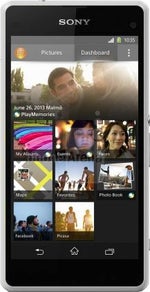
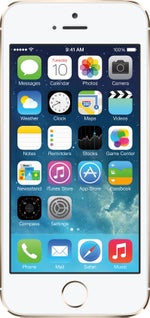
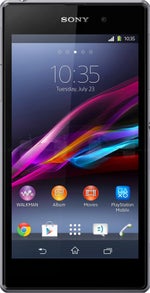
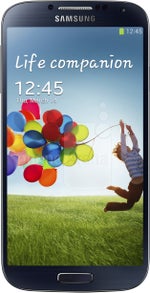




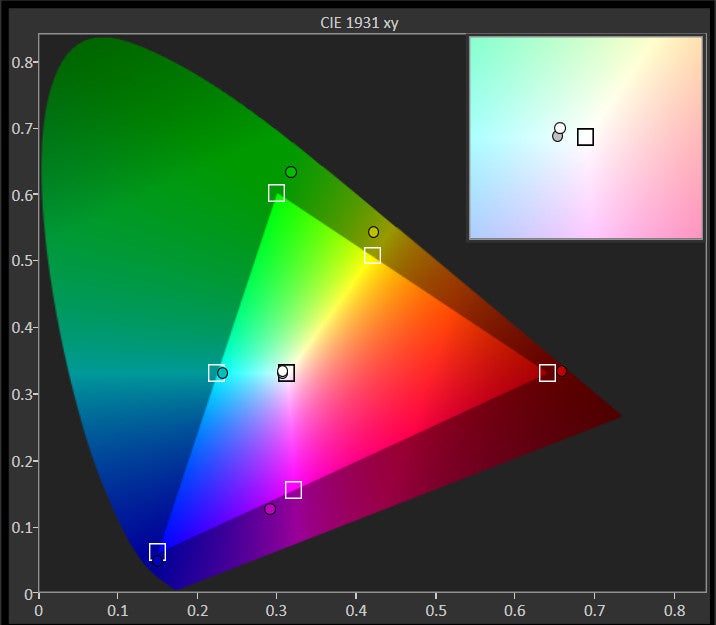













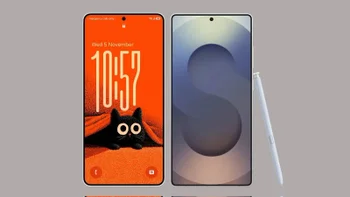









Things that are NOT allowed:
To help keep our community safe and free from spam, we apply temporary limits to newly created accounts: